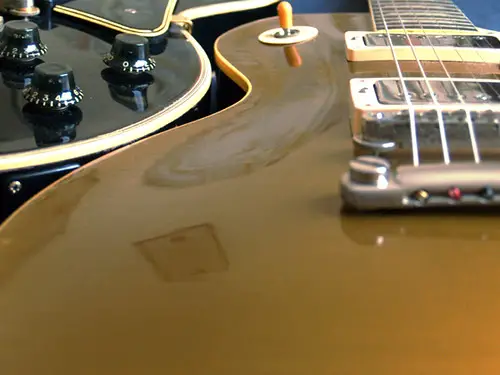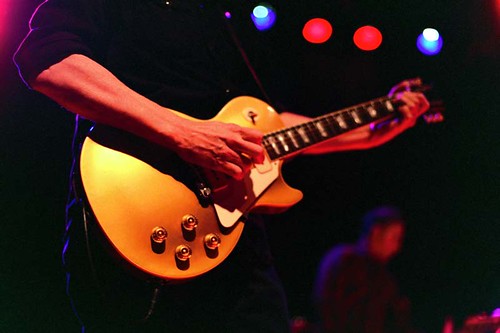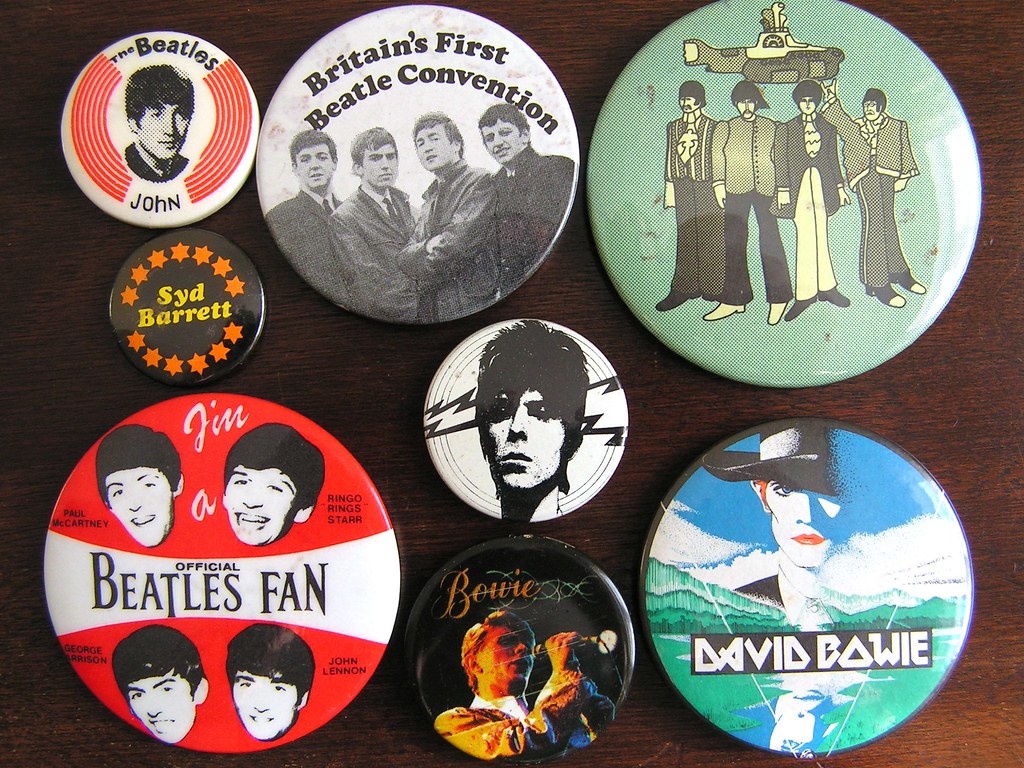There are very few musical instruments that wear the sheen of durable charisma and historic relevance as the Gibson’s 1952 Goldtop. Beloved by musicians across generations and genres, this icon of the music world was not just a breakthrough in guitar manufacturing, but a testament to quality and craftsmanship that still resonates today. Epitomizing a remarkable blend of sonic richness and visual elegance, the Goldtop has become synonymous with a level of prestige enjoyed by few other instruments. From the broad strokes of its strategic inception and unique design elements to the impact it has left on culture and the music industry, the Goldtop’s journey is a narrative that mirrors the evolution of guitar craftsmanship.
The inception and design of Gibson’s 1952 Goldtop
Establishing the Gold Standard: The Birth of the 1952 Goldtop
In the pantheon of legendary Gibson guitars, Gibson’s 1952 Goldtop holds its own unique place. Born in Kalamazoo, Michigan, USA, the Gibson Goldtop was introduced at a pivotal time in music history, right at the onset of the rock ‘n’ roll era. The guitar was essentially the company’s response to Leo Fender’s 1950 Broadcaster (renamed Telecaster in 1951), the first solid-body electric guitar to gain mass-market acceptance.
With this strategic move, Gibson set out not just to compete, but to differentiate. They designed the Goldtop with an arched, carved maple top—a contrast to Fender’s flat-topped Telecaster. The beauty of the Goldtop’s design lay not just in its contours but in its dazzling gold finish, a feature that set it apart visually from any other guitar on the market.
Prioritizing Playability and Tone
Beyond its aesthetic charm, the Goldtop was engineered with careful attention to comfort and sound quality. The first Gibson Goldtop models were equipped with the innovative trapeze tailpiece designed by Gibson president Ted McCarty. However, the early version could lead to fret buzz, prompting Gibson to adjust the design in 1953.
As for the pickups, Gibson initially used their signature P-90 pickups, which offered a warm, full-bodied tone with a remarkable amount of bite. However, these also underwent revisions in subsequent models, facilitating the evolution of the Gibson Goldtop Sound.
The Debut of the Goldtop and its Journey to Fame
The introduction of the Goldtop in 1952 amplified excitement and intrigue in the music industry. Its groundbreaking design and unique resonance soon caught the attention of well-known musicians around the globe. The Goldtop quickly stole the spotlight, becoming a favored instrument among renowned players such as Les Paul, who significantly contributed to its design.
Despite undergoing three significant variations during the 1950s, the original 1952 Goldtop still holds a prominent place in the hearts of Gibson devotees – a testament to the brand’s commitment to innovation and impeccable audio quality.

Cultural impact and iconic players
The Resonating Impact of Gibson’s 1952 Goldtop
Gibson’s 1952 Goldtop resonated beyond just being a musical instrument. It became a significant cultural symbol, closely linked with the rise of rock and roll in the 1950s. The Goldtop, in the hands of music pioneers, contributed to the evolution of the music scene significantly. Known for its well-balanced tone, the Goldtop imprinted an unforgettable sound that dominated radio frequencies of that era. This iconic guitar played a fundamental role in crafting genres such as rock, blues, jazz, and country, contributing its unique sound to hit records that resonated with audiences nationwide.
Endorsement by Famous Players
The success and popularity of the Gibson’s 1952 Goldtop was significantly influenced by its endorsement from renowned guitarists of the era. Legendary rock and rollers such as Chuck Berry’s endorsement brought this instrument national attention, forever etching its name in the annals of rock and roll history. Similarly, players like Carl Hogan, B.B. King, and Freddie King also gave the Goldtop their seal of approval, each wielding it in their distinctive styles to create trendsetting music.
Iconic Performances and Influence on Subsequent Guitar Designs
The Gibson’s 1952 Goldtop had a major role in numerous iconic performances throughout the history of popular music. From the raucous tones belted by Chuck Berry during his ground-breaking performance in 1958, to the sultry blues inflections conjured by B.B. King, the guitar defined generations of sound. This significant contribution to music also influenced the design of many guitars that followed. The Goldtop’s construction provided a blueprint for the sound and aesthetic guitarists sought. Key design features such as its Les Paul design, mahogany body, rosewood fingerboard, and trapezoid inlays contributed to its superior tone and were incorporated into subsequent electric guitar designs.
The Legacy Beyond Melody
Viewing the 1952 Goldtop merely as a musical instrument undersells its profound impact on the evolution of music. It’s not just an iconic guitar; it’s a symbol etched into the rich tapestry of American music history. With its distinctive design, vibrant tone, and links to groundbreaking artists, the Goldtop is an enduring emblem of an exciting period in cultural history. The passage of time hasn’t diminished its allure; it remains a prize target for enthusiasts, hobbyists, and professional guitarists.
Indeed, the Gibson’s 1952 Goldtop transcends its physical attributes. Its substantial influence permeates both cultural and historical facets, making it an integral string in the American music narrative.
The technical specifications and sound qualities
Engineering and Craftsmanship
Infused with the spirit of innovation and born out of Gibson’s renowned craftsmanship, the Goldtop is as much about materials as it is about music. The body is a testament to a calculated balance of two woods: the deep resonating mahogany forms the back and sides while a denser maple shapes the top. This deliberate blend resulted in a guitar that sings with a deep, full tone and resonates with sustained harmonics.
The neck, a traditional one-piece mahogany design, is crowned with a rosewood fingerboard. Classic trapezoid inlays add to its visual charm, marking out 22 individual frets. Each fret is carefully carved with the precision that ensures perfect execution of speedy runs and intricate chords, a testament to the unwavering attention to detail ingrained in its construction.
Innovative Hardware
The appearance of Goldtop was undeniably defined by its namesake, the metallic gold finish. Beyond the finish, what set the 1952 Goldtop apart was the innovative hardware used. The addition of the trapeze tailpiece, which suspends the strings over the body rather than anchoring them, marked a departure from the normal design, and contributed to a unique tonality.
However, it wasn’t just the trapeze tailpiece that distinguished the Goldtop. The unprecedented introduction of separate volume and tone controls for each pickup granted guitarists unprecedented control, enabling them to craft the precise sound signature they desired.
The Heart of the Sound: P-90 Pickups
The Goldtop featured P-90 pickups, which became intrinsic to its legacy. P-90s were Gibson’s first successful single-coil design, and they infused the Goldtop with a sound profile as distinctive as its shimmering golden hue. Compared to humbuckers, P-90s provided a brighter, edgier tone that was an essential aspect of the Goldtop’s strong, expressive voice. This unique sound profile appealed to a plethora of musicians, contributing significantly to the guitar’s identity and popularity.
Assessing the 1952 Goldtop’s Relation with Other Gibson Models
Within the echelons of Gibson’s prestigious range of instruments, the Goldtop was a game-changer. Its contemporaries, like the hollow-bodied ES-175 which featured PAF humbucking pickups, generated a sound that was a blend of velvety richness. Meanwhile, the solid-body Les Paul Standard, the successor of the Goldtops in 1958, offered a more robust sound filled with power thanks to its humbucking pickups.
Yet, the 1952 Goldtop held its own. It possessed an unmatched tonal equilibrium, a harmonious blend of vigorous projection and soothing richness. This distinguished it as a thoroughly inventive product in the extensive line of Gibson’s superior guitars. Through shifts in preferences and the introduction of new models, the 1952 Goldtop has stood the test of time. Its legacy serves as an everlasting tribute to Gibson’s remarkable creativity and craftsmanship.

The Goldtop’s evolution and variations
The Emergence of an Icon: The 1952 Goldtop
In 1952, Gibson broke new ground with the introduction of the Les Paul Goldtop model. This marked the beginning of a new chapter in the history of Gibson guitars. The Goldtop was immediately distinguished due to its striking and individual aesthetic which combined a golden top, cream-colored body, and a glossy finish.
Design Changes: Gibson Innovations
Over the years, the Goldtop saw several design changes. The 1953 model introduced changes to the trapeze tailpiece, designed to make it user-friendly for musicians who played with a technique called palm-muting. In 1954, a new wraparound bridge was introduced, which served to both act as a tailpiece and improve intonation and sustain. The following year, the design of the bridge was overhauled once more, and the now-iconic Tune-o-matic bridge was born, a design so successful it is still used on various Gibson models to this day.
P-90 and Humbucker: Variations over the Years
Variations of the Gibson 1952 Goldtop are significantly marked by the changes in the pickups used. The first models were equipped with P-90 single-coil pickups. A significant shift came in 1957, when Gibson introduced the humbucker pickup in its Goldtop models. This made the guitar less prone to electrical interference and feedback, and provided a rounder, more mellow sound that contrasted the bright tone of the single-coil pickups. This innovation resulted in famous models like the 1957 Goldtop Darkback.
Limited Edition Models: Tribute to the Golden Era
Through the decades, Gibson has released various limited-edition and tribute models of the Goldtop that carry forward the legacy of the original 1952 model. The 2002 Limited Edition R7 Goldtop, for instance, was produced as a tribute to the 1952 original, complete with a set of special P-90 pickups. In 2011, the company released the Gibson Les Paul 1952 Tribute goldtop, another model that revisits the original design down to the very last detail.
Shifts in Popularity: The Goldtop in the Shadows
Despite its continuous innovations and charm, the Goldtop saw a drop in popularity in the late 1950s, overshadowed by the sunburst and custom models. However, the model experienced a revival in the late 60s and early 70s when guitarists like Duane Allman and Mike Bloomfield began using them on stage, re-establishing its status as a standard in Les Paul’s lineup.
The Genesis and Evolution of Gibson’s 1952 Goldtop
The journey of the Goldtop traces back to the core philosophy of Gibson – enhancing the user experience with constant refinements. Over the years, they introduced design improvements, ushered in the era of humbucker pickups, and sought the ever-elusive perfect intonation. While adapting to the changing musical landscapes, the Goldtop never lost its defining attribute – the golden top – that has iconicized it within Gibson’s storied legacy.
Market value and the collector’s perspective
The Timeless Prestige of Gibson’s 1952 Goldtop
Holding a revered spot in the vintage guitar niche, Gibson’s 1952 Goldtop is more than a musical instrument. It’s an emblematic piece of Gibson’s historical lineage. Market conditions and specific aspects like guitar’s condition and modifications often influence their prices. Nonetheless, it isn’t surprising to see immaculate models command prices exceeding $20,000, reflecting both their rarity and the profound respect Gibson’s craftsmanship commands.
The Infuence of Various Factors on the Market Price
The factors influencing the market value of these guitars encompass several areas. The originality of the guitar is paramount – models that retain all their original parts and have not been modified hold the highest value. Condition is second in influencing the price, which can vary drastically based on the presence of scratches, dings, or tarnishing. On a more nuanced level, certain idiosyncratic characteristics, such as the unique grain of the wood or an anomaly in the finish, may increase a guitar’s value to a seasoned collector.
Investment Potential of Gibson’s 1952 Goldtop
The Gibson’s 1952 Goldtop is considered a relic of the Gibson legacy, making it a potentially lucrative investment. Their value has trended upward throughout the years, thanks in part to their heritage and a boom in vintage guitar collecting. In recent decades, they have steadily gained in value at a rate that outperforms many traditional investments. Buyers should be aware, however, that market trends can shift, and the investment potential of such collectibles is not guaranteed.
Tips for Identifying Original Models
Identifying an original Gibson’s 1952 Goldtop can be complicated due to numerous reproductions and counterfeits. However, there are several tell-tale indicators. For starters, the original ’52 Goldtops were fitted with a trapeze-style tailpiece, unlike the subsequent models. Remember, the Gibson factory used serial numbers starting in 1953, so guitars from ’52 don’t carry these indicators. Pay close attention to materials as well, such as the use of solid mahogany for the body and a gold finish that has a certain luster not replicated in cheaper models.
Ultimately, buying a Gibson’s 1952 Goldtop is not merely an acquisition of an exceptional instrument but also a piece of Gibson’s historic innovation.
Its value lies in its age, authenticity, and the storied legacy it upholds. Its desirability to collectors makes it a high-ticket item with serious investment prospects. Understanding the factors that contribute to its value is key to making a well-informed purchase and preserving an important chapter in the Gibson lineage.
Scope and depth of the Gibson’s 1952 Goldtop’s legacy move significantly beyond its value as a collector’s item. It is a symbol of an era, a testament to the artistry that revolutionized music culture, and a beacon of storytelling expressed through the language of music. Indeed, the Goldtop’s significant technical specifications, evolution, variations, and its revered position in the marketplaces do not solely encapsulate its legacy. Within its gleaming veneer and distinctive sound, we find the footprints of iconic musicians, the pulse of memorable performances, and the silent testament to a rapidly evolving music industry. While its cost represents a mere numerical aspect, its true worth lies in its ability to keep contributing to the tapestry of sound that forms the backdrop of our lives.
Revolutionize your content creation with Writio, the ultimate AI writing assistant. This article was crafted by Writio, the master of words.










